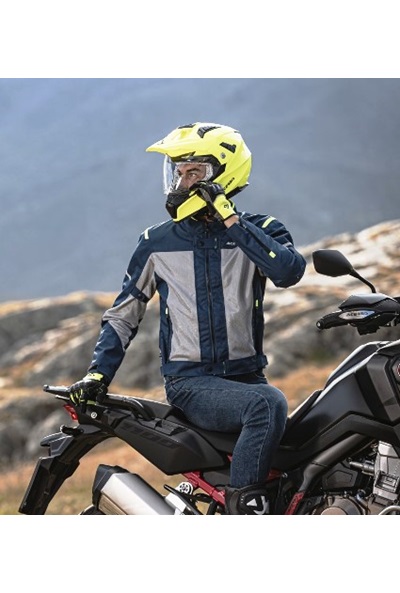How to choose a motorcycle helmet
How to choose a motorcycle helmet? [HINTS AND TIPS] | MEFO Václav Jůzek
Václav JůzekRiding a motorbike is a sport where you experience adventure, a sense of adrenaline and a view of the surrounding environment. However, to enjoy this fun to the full and with a sense of security, you need to remember safety. That is why you should pay attention to the careful selection of the right helmet. In this article, you will learn about the key factors and parameters to consider when choosing a helmet.
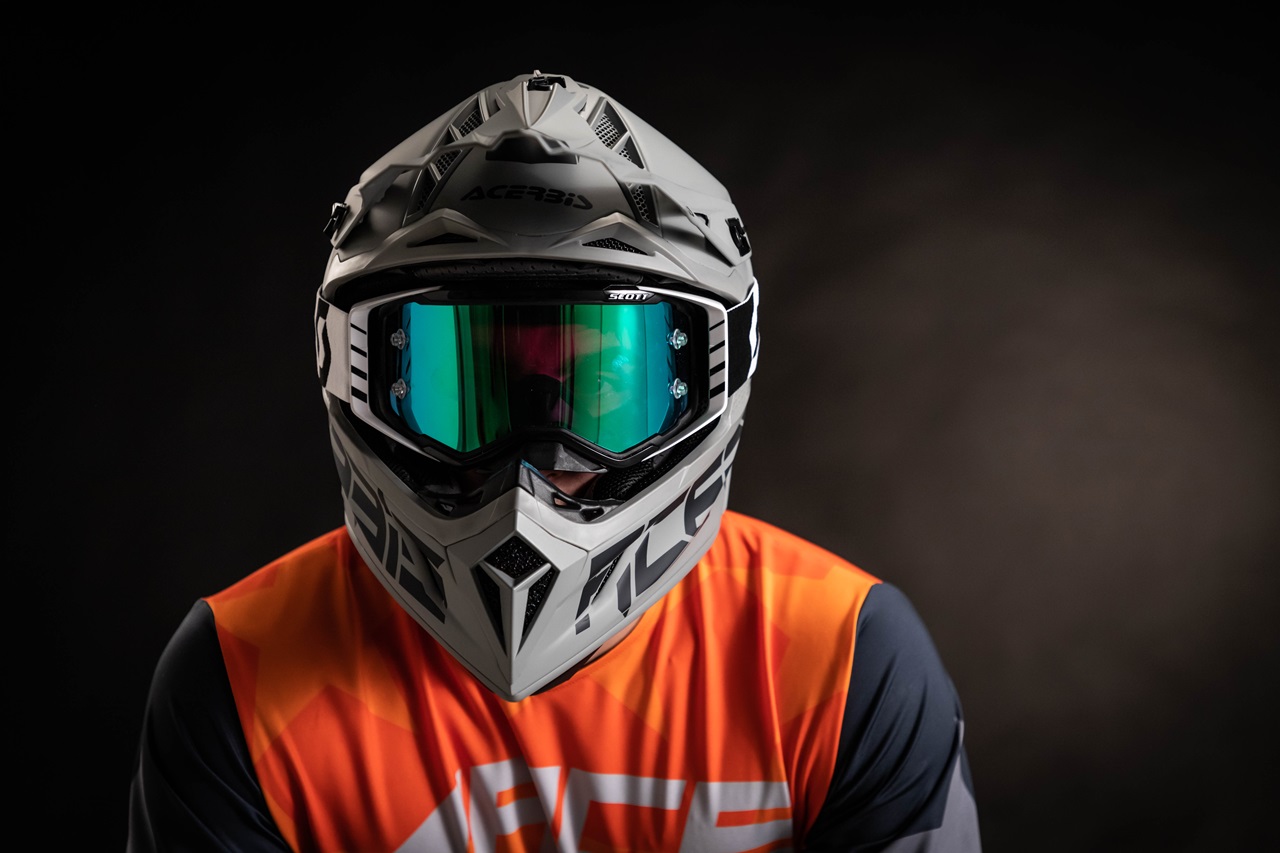
Helmet type
When thinking about how to choose a motorcycle helmet, the first question that comes to mind is what type of helmet you should actually choose. The helmet should match the type of motorcycle you have and the environment you ride in. In other words, the choice of helmet will be different for a road bike and different perhaps for motocross racing.
A full-face helmet is suitable for road, touring and sport motorcycles, providing complete head and face protection when riding and is ideal for long distance and high speed road riding. Sometimes also referred to as an integral helmet or full face helmet.
An open-faced helmet is often preferred when riding in the city, on cruisers and scooters, as it provides better ventilation, a feeling of freedom and comfort. It is particularly suitable for riding in mild conditions when full face protection is not needed.
The modular helmet, which can also be found under the name flip-up helmet, is suitable for hiking and long rides where comfort and protection need to be combined. It allows for easier communication and drinking without having to remove the entire helmet.
The off-road helmet is designed specifically for off-road, motocross and trail riding, with a distinctive visor it provides effective protection from the sun and mud, its construction is lightweight and has larger air vents for effective cooling.
The Enduro helmet is designed for a combination of off-road and on-road riding. It usually has a smaller visor than a motocross helmet and less pronounced vents
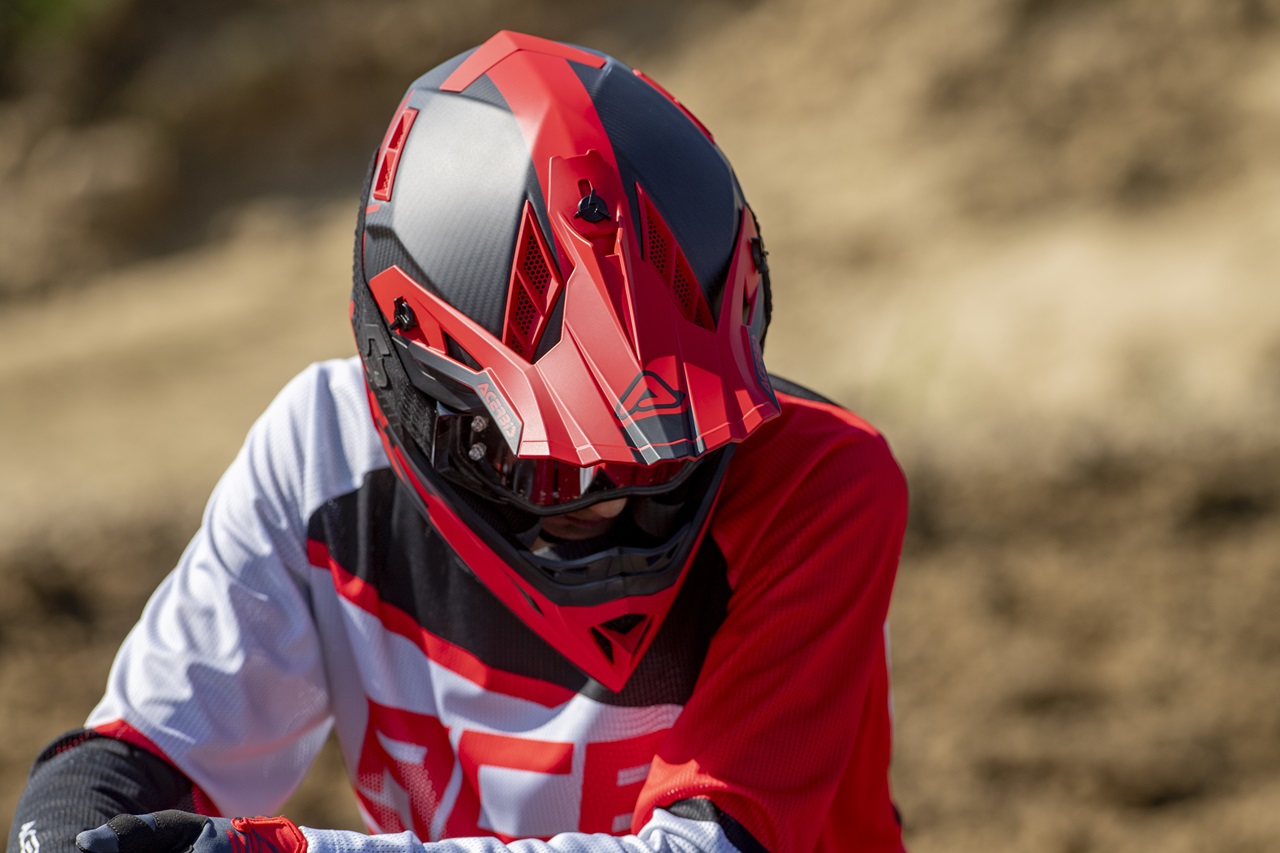
Helmet size
The right size motorcycle helmet is essential to protect your head when riding any type of motorcycle and off-road. A looser helmet may seem more comfortable, but it could slip off your head while riding and won't provide the effective protection you can rely on from a properly fitting helmet in the event of an accident. So be careful when choosing a helmet size and don't underestimate the measurements.
To determine the correct helmet size, measure your head circumference. Use a tailor's tape measure or measuring tape and measure the circumference of your head approximately 2.5 cm above your eyebrows, gripping the tape so that it runs just above your ears. Make a note of the measurement, you will need it to compare with the size chart.
Helmet brands and models usually have their own motorcycle helmet sizing chart to help you determine the correct size. So when you measure your head circumference, don't rely on other brands and models of helmets to fit you in the same size. Check the size chart every time.
How a motorcycle helmet should fit
Once you have determined the correct helmet size from the chart, try it on. The helmet should fit comfortably but really snugly on your head. Properly, you should feel that it's stable and doesn't slip on your head, but at the same time you have enough room to wear it comfortably without it being too loose.
When testing the helmet, try head movements such as turning and tilting to see if the helmet stays stable and doesn't slip when you are working. Also pay attention to whether the helmet restricts your movement. A properly fitting helmet size should be able to be worn for extended periods of time without discomfort. In addition to choosing the right helmet, be sure to choose durable body protectors, motorcycle goggles and other equipment
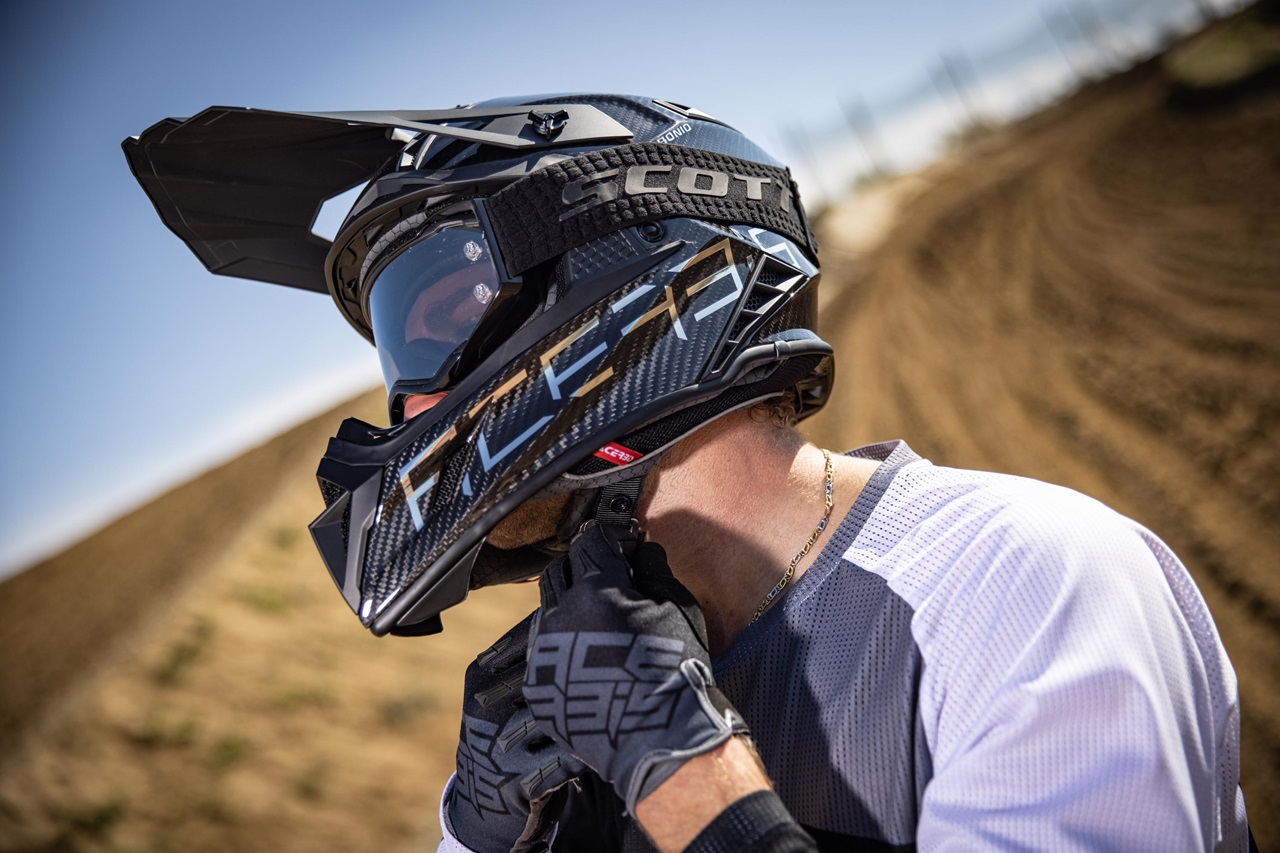
Motorcycle helmet material
There is quite a wide choice of materials for motorcycle helmets. The price and weight of the helmet depend on them. Commonly used materials include fibreglass, composite materials such as carbon and aramid fibres, polycarbonate, EPS, but also leather and fabric. It is important to choose helmets that are made of quality materials suitable for the specific type of riding and conditions in which they will be used.
Fiberglass is most commonly used in full-body helmets for road, touring and sport motorcycles. Fiberglass helmets are lightweight and strong, making them the ideal combination for high speed riding on the road. They are also suitable for enduro, especially if higher impacts or crash risk are anticipated.
Polycarbonate is often used for open and modular helmets. Features of such helmets include a good combination of strength, lightness and affordability. Their durability is slightly lower than, for example, that of helmets made of composite materials and therefore they are particularly suitable for urban riding, scooters and recreational riders. In general, helmets made of polycarbonate are a cheaper option. However, their disadvantage is their higher weight compared to helmets made of composite materials. Polycarbonate helmets are also a good idea to replace after a few years of use, as the material can become brittle over time due to UV rays. Helmets of dark colours are particularly susceptible to the risk of gradual embrittlement of the material.
Carbon and aramid materials are usually used in sports and racing helmets, which require maximum strength and lightness. They are suitable for motocross riding and racing where durability and impact protection are important. Helmets made from composite materials such as carbon or aramid fibres, unlike helmets made from polycarbonate, do not suffer and warp due to UV rays.
EPS (expanded polystyrene) is used for the inner padding of all types of helmets, its main function is to absorb impact energy and protect the rider's head from injury in potential collisions.
Leather and fabrics are usually used for the padding and inner lining of helmets to provide both comfort and aesthetic appeal to the rider. These materials are usually used in full helmets
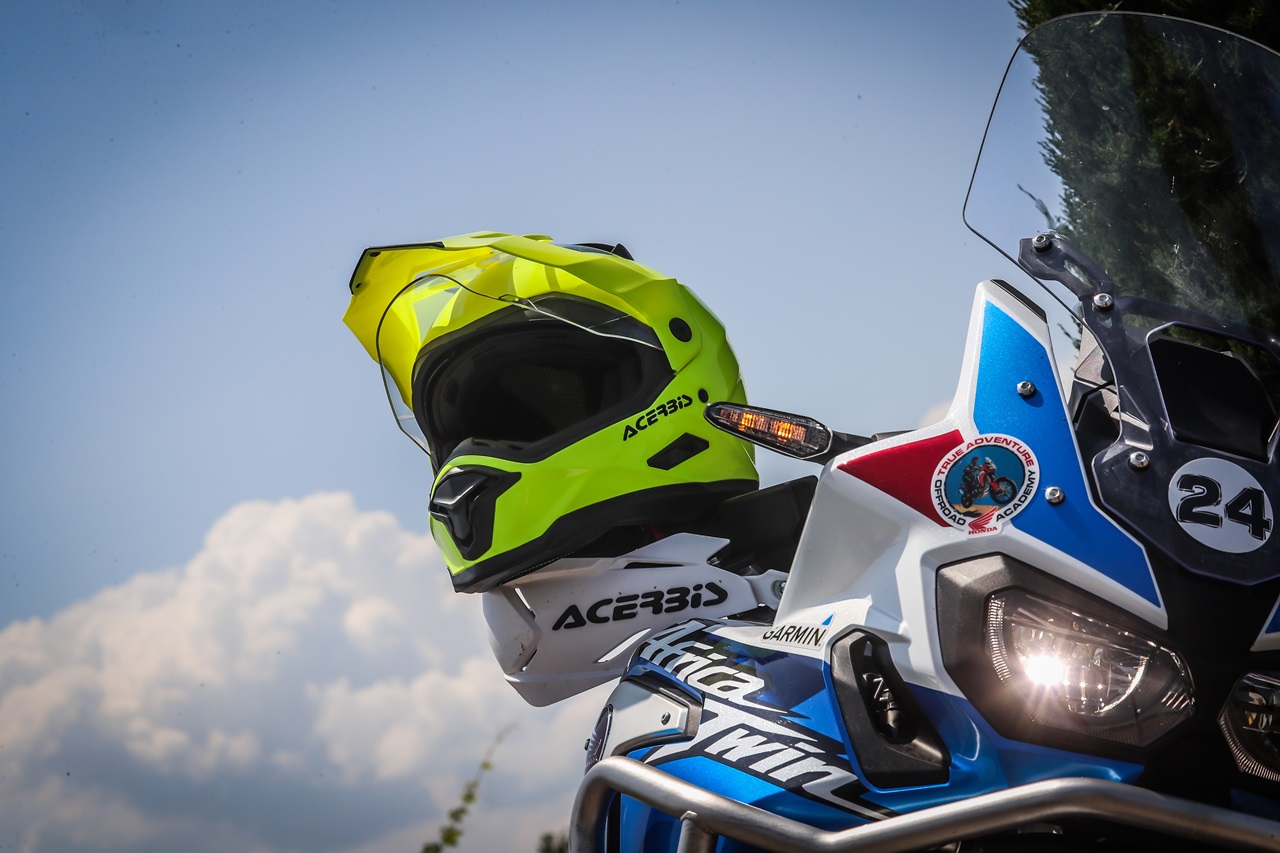
Safety standards
Safety is the most important factor when choosing a motorcycle helmet. The helmet must be homologated, which means it has been tested and approved. Never buy and use a helmet that is not homologated. A helmet that does not meet current safety standards can be life-threatening.
Motorcycle helmets in Europe must be manufactured and certified in accordance with the safety standards set by the European Union. The main safety standard for motorcycle helmets in Europe is ECE 22.06 (Economic Commission for Europe Regulation No. 22, version 06). You will usually find an indication of compliance with the standard on the strap of the helmet or on its inner padding.
ECE 22.06 is the latest revision of the safety standard for motorcycle helmets, which specifies minimum requirements for construction, materials, impact resistance, field of vision, fastening systems and other factors that contribute to riding safety. Helmets must therefore be certified and marked ECE 22.06 in order to be sold and used in European Union countries. Helmets that meet this standard must pass rigorous crash tests and other checks to ensure their ability to provide protection for the rider's head in crashes and accidents.
In addition to ECE 22.06, other safety standards for motorcycle helmets are recognised in Europe, such as those set by the International Motorcycle Federation (FIM) for racing helmets. However, ECE 22.06 is the most common and widely used standard. With a European ECE certificate, you can ride your motorcycle in America, where it is equivalent to our SNELL standards. The latter is considered the most stringent homologation in the world. So if you get a helmet with SNELL certification, it will also meet ECE certification.
Helmet design, style and colour
Above we have covered the most important parameters and features that a proper motorcycle helmet should meet. So, if you have in mind meeting safety standards, the importance of the right helmet size, the choice of materials and the appropriate type of helmet with respect to the type of bike and riding style, then you can boldly dive into the choice of design and colour. With this choice, you can now let your imagination run wild. It's up to you whether you want to go for a classic black, monochrome helmet to match your bike or go for an extra colourful style. After all, a motorcycle helmet in a garish colour or with other bold colours can also have a safety advantage, as you'll simply be unmissable on the road or track. If you don't want to attract attention, feel free to reach for a design that makes you feel good. You can also match your helmet with other motorcycle clothing
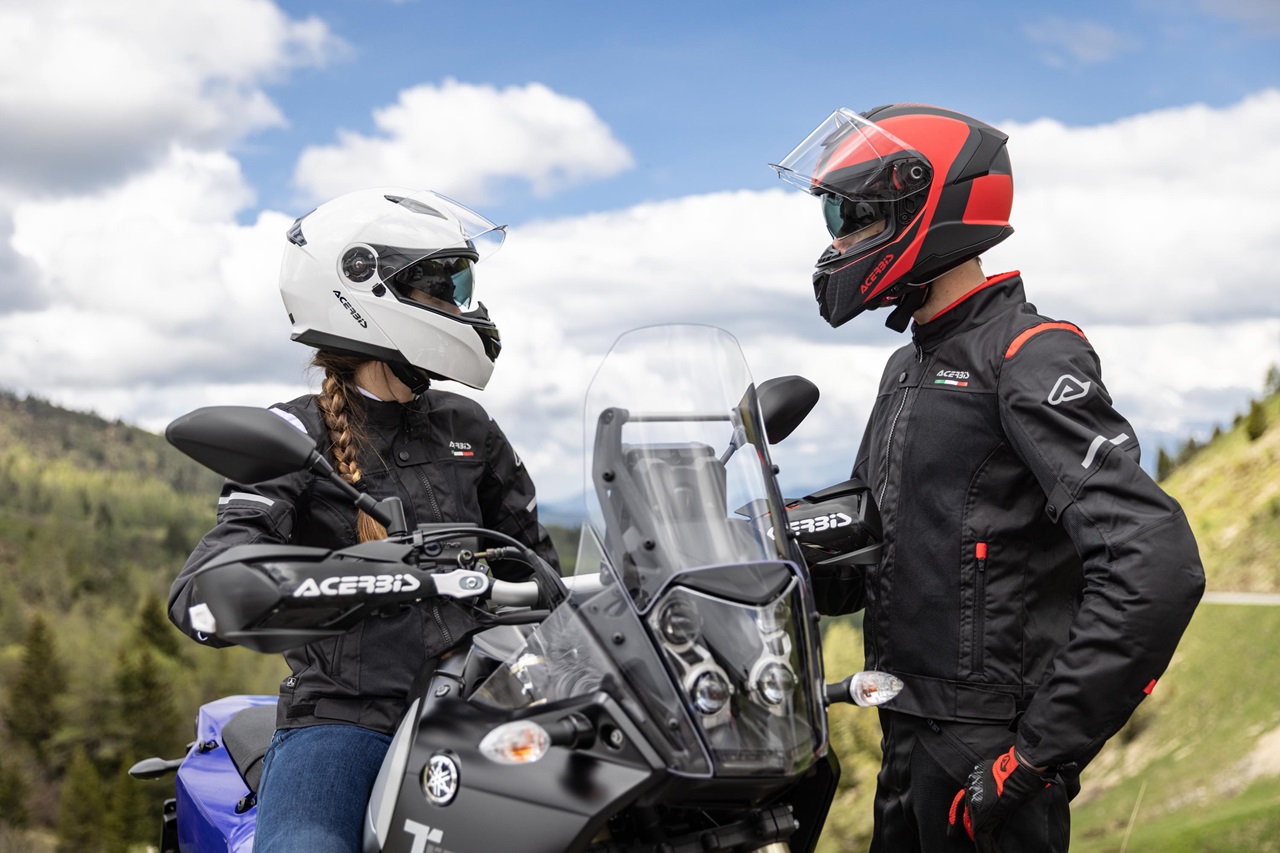
Conclusion
As mentioned above, the most important factor when choosing a motorcycle helmet is safety first and foremost and also comfort. Don't underestimate the established safety standards or the right choice of helmet size and material to give you the protection and comfort you need during your rides, whether you ride your motorcycle to work, are an avid racer who braves every track and off-road terrain, or a traveler who enjoys riding with a view of the scenery.
Our Store
Not far from Strakonice, in the small village of Jinín next to the world-famous motocross track, you will find our MEFO store. Here, you will always be greeted by friendly salespeople who will be at your disposal throughout your entire shopping experience.

 PLASTICS
PLASTICS airbox and airbox covers
airbox and airbox covers NUMBER PLATE
NUMBER PLATE LOVER FORK COVERS
LOVER FORK COVERS INGNITION & CLUTCH COVER
INGNITION & CLUTCH COVER TANK COVER
TANK COVER MUD FLAP
MUD FLAP SKID PLATES
SKID PLATES FRAME PROTECTOR
FRAME PROTECTOR HEADLIGHT MASK
HEADLIGHT MASK SIDE PANELS
SIDE PANELS TAIL LIGHT FENDER
TAIL LIGHT FENDER FRONT FENDER
FRONT FENDER RADIATOR SCOOPS
RADIATOR SCOOPS REAR FENDER
REAR FENDER UNIVERSAL FENDER
UNIVERSAL FENDER BRAKES
BRAKES BRAKE DISCS & BOLTS
BRAKE DISCS & BOLTS BRAKE PADS
BRAKE PADS CALIPERS & BRAKE PUMPS
CALIPERS & BRAKE PUMPS BRAKE PEDAL
BRAKE PEDAL BRAKE HOSE
BRAKE HOSE DISC COVER
DISC COVER ENGINE PARTS
ENGINE PARTS GASKETS & SEALS
GASKETS & SEALS CYLINDER HEAD
CYLINDER HEAD CARBURETOR
CARBURETOR BEARINGS
BEARINGS FRICTION PLATES
FRICTION PLATES OIL PLUG
OIL PLUG PISTON SETS
PISTON SETS TIMING CHAINS
TIMING CHAINS CLUTCH & ACCESSORIES
CLUTCH & ACCESSORIES engine covers
engine covers FILTERS
FILTERS AIR FILTER COVER
AIR FILTER COVER OIL FILTER
OIL FILTER NET AIR FILTER
NET AIR FILTER AIR FILTER
AIR FILTER FUEL FILTER
FUEL FILTER RADIATOR
RADIATOR RADIATORS
RADIATORS RADIATOR LOUVERS
RADIATOR LOUVERS RADIATOR BRACES
RADIATOR BRACES RADIATOR HOSES
RADIATOR HOSES WHEELS
WHEELS BEARINGS
BEARINGS SPOKES
SPOKES SPACERS
SPACERS NUTS
NUTS WHEELS & RIMS
WHEELS & RIMS TPS SENSOR COVER
TPS SENSOR COVER SWINGARM & LINKAGE
SWINGARM & LINKAGE LINKAGE KIT
LINKAGE KIT KETTENBLOCK
KETTENBLOCK LINKAGE COVERS
LINKAGE COVERS SWINGARM PROTECTION
SWINGARM PROTECTION CABLES
CABLES TANKS
TANKS ADDITIONAL TANKS
ADDITIONAL TANKS TANK CAPS
TANK CAPS TANK VALVES
TANK VALVES TANK PARTS
TANK PARTS SPARK PLUG
SPARK PLUG  SHIFT LEVERS
SHIFT LEVERS STEERING
STEERING HANDLEBARS
HANDLEBARS LEVERS AND PERCH
LEVERS AND PERCH HANDGUARDS
HANDGUARDS  GRIPS
GRIPS CLAPS
CLAPS CLAMPS
CLAMPS THROTTLE TUBE
THROTTLE TUBE STEERING NECK
STEERING NECK CROSSBAR PAD
CROSSBAR PAD HANDLEBAR ACCESORIES
HANDLEBAR ACCESORIES HANDGUARD ACCESSORIES
HANDGUARD ACCESSORIES GRIP ACCESSORIES
GRIP ACCESSORIES CHAIN SET
CHAIN SET FRONT SPROCKETS
FRONT SPROCKETS SPROCKETS & SCREWS
SPROCKETS & SCREWS CHAINROLLER
CHAINROLLER SPROCKET COVERS
SPROCKET COVERS  ke kolečkům
ke kolečkům CHAIN GUIDES
CHAIN GUIDES BOLT SETS
BOLT SETS SEATS
SEATS SEAT
SEAT SEATFOAM
SEATFOAM SEAT COVER
SEAT COVER FOOTPEGS
FOOTPEGS FOOTPEGS
FOOTPEGS SPRINGS & PINS
SPRINGS & PINS PROTECTORS
PROTECTORS HEADLIGHTS
HEADLIGHTS SHOCK ABSORBERS
SHOCK ABSORBERS SIMERINGS & DUSTERS
SIMERINGS & DUSTERS SET OF BUSHINGS
SET OF BUSHINGS bleeder screw
bleeder screw sleeves for forks
sleeves for forks rear shock sleeves
rear shock sleeves REAR SHOCK ATTACHMENT
REAR SHOCK ATTACHMENT LAUNCH HELPER
LAUNCH HELPER EXHAUST
EXHAUST EXHAUST PROTECTION
EXHAUST PROTECTION COTTON WOOL
COTTON WOOL PLUGS
PLUGS HEAT-RESISTANT FOIL
HEAT-RESISTANT FOIL CONNECTING RUUBBER
CONNECTING RUUBBER SPRINGS
SPRINGS REPAIR KITS
REPAIR KITS SILENTBLOCK
SILENTBLOCK



 HELMETS
HELMETS FULL FACE
FULL FACE FLIP-UP
FLIP-UP ADVENTURE
ADVENTURE OPEN
OPEN JUNIOR
JUNIOR RETRO
RETRO women's
women's ACCESSORIES
ACCESSORIES GOGGLES
GOGGLES GLASS, TEARS OFF...
GLASS, TEARS OFF... PROTECTION
PROTECTION CHEST PROTECTORS
CHEST PROTECTORS NECK BRACES
NECK BRACES KIDNEY BELTS
KIDNEY BELTS ELBOW PROTECTORS
ELBOW PROTECTORS KNEE GUARDS
KNEE GUARDS BACKBONE
BACKBONE BODY ARMOUR
BODY ARMOUR JUNIOR
JUNIOR BOOTS
BOOTS travel
travel ANKLE
ANKLE ENDURO
ENDURO JUNIOR
JUNIOR soles and more
soles and more Boots
Boots on a scooter
on a scooter JERSEYS
JERSEYS JUNIOR
JUNIOR JACKETS
JACKETS ENDURO
ENDURO women
women REFLECTIVE
REFLECTIVE PANTS
PANTS ENDURO
ENDURO TEXTILIE
TEXTILIE  jeans
jeans summer
summer Sweatpants
Sweatpants GLOVES
GLOVES WINTER
WINTER ENDURO
ENDURO summer
summer WATERPROOF
WATERPROOF T-SHIRTS
T-SHIRTS trika-uni
trika-uni Children's T-shirts
Children's T-shirts Mini T-shirts
Mini T-shirts SOCKS
SOCKS WATERPOOF GEAR
WATERPOOF GEAR Headwear
Headwear HAT
HAT SWEATSHIRT
SWEATSHIRT shorts
shorts friee time
friee time SOFT PANTS
SOFT PANTS VESTS
VESTS Accessories for bikers
Accessories for bikers HOODS
HOODS SCARF
SCARF belts
belts drobnosti
drobnosti THERMO UNDERWEAR
THERMO UNDERWEAR THERMO T-SHIRTS
THERMO T-SHIRTS THERMO PANTS
THERMO PANTS THERMO KNEE SOCKS
THERMO KNEE SOCKS MEFO MOUSSE
MEFO MOUSSE MOUSSE GEL
MOUSSE GEL MOUSSE KIT
MOUSSE KIT 10"
10" 12"
12" 14"
14" 16"
16" 17"
17" 18"
18" 19"
19" 20"
20" 21"
21" TUBE
TUBE 4"
4" 5"
5" 6"
6" 8"
8" 9"
9" 10"
10" 12"
12" 13"
13" 14"
14" 15"
15" 16"
16" 17"
17" 18"
18" 19"
19" 21"
21" 22"
22" 23"
23" HALTERS
HALTERS MX TIRE
MX TIRE 10"
10" 12"
12" 14"
14" 15"
15" 16"
16" 17"
17" 18"
18" 19"
19" 20"
20" 21"
21" ENDURO TIRE
ENDURO TIRE ROAD TIRE
ROAD TIRE 15"
15" 23"
23" 4"-6,5"
4"-6,5" 8"
8" 13"
13" TOOLS
TOOLS Wrenches, hooks, screwdrivers
Wrenches, hooks, screwdrivers TIRE LEVERS
TIRE LEVERS  CHAIN BREAKERS
CHAIN BREAKERS Preparations for shocks
Preparations for shocks Preparations for wheels
Preparations for wheels Engine preparations
Engine preparations Preparations for bearings
Preparations for bearings OTHER MOTO TOOLS
OTHER MOTO TOOLS GRAPHICKITS, NUMBERS
GRAPHICKITS, NUMBERS Canisters, measuring cups
Canisters, measuring cups TRANSPORT
TRANSPORT CARPETS
CARPETS MOTORCYCLE COVERS
MOTORCYCLE COVERS HOURMETER
HOURMETER helpers for track and training
helpers for track and training STAND
STAND HYDRATION BAGS
HYDRATION BAGS PIT BOARD, MARKER
PIT BOARD, MARKER MOTO LUGGAGE
MOTO LUGGAGE BACKPACKS
BACKPACKS WAIST PACKS
WAIST PACKS FORK OIL
FORK OIL AIR FILTER OIL
AIR FILTER OIL CHAIN LUBES
CHAIN LUBES COOLANT FLUID
COOLANT FLUID BRAKE FLUID
BRAKE FLUID CLEANER AND IMPREGNATION
CLEANER AND IMPREGNATION additives
additives VOUCHERS
VOUCHERS KEYCHAINS
KEYCHAINS WRISTBANDS
WRISTBANDS STAND
STAND PLATE
PLATE BOOK
BOOK WEAR SALE
WEAR SALE HELMETS SALE
HELMETS SALE LEVERS SALE
LEVERS SALE MTB JERSEY
MTB JERSEY MTB PANTS
MTB PANTS bike bags
bike bags cyclo kidney
cyclo kidney MTB HANDGUARDS
MTB HANDGUARDS MTB ACCESSORIES
MTB ACCESSORIES



